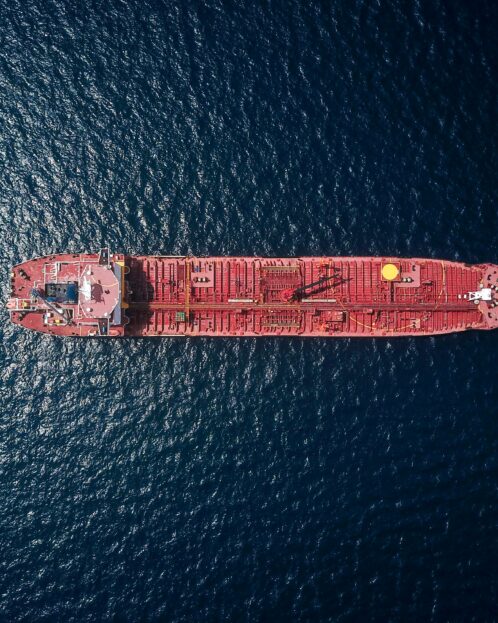26 November 2024
Recent increases in landside port charges at Australian container ports prompt an important question for public policy makers and industry stakeholders: is port productivity improving as a result of new charges and capital investment by stevedores? This article considers the various ways in which container port productivity can be measured, what recent data tells us about the performance of Australian ports and issues that are being considered by policy makers.
Why is port productivity important?
Most countries including Australia are highly dependent on international trade for both supply of goods to consumers and generating export income for producers. Productive ports reduce transport costs, optimise supply chains and improve customer service for producers and consumers. Port and transport costs are particularly important for regional producers and impact on export competitiveness. Producers cannot influence commodity prices, meaning landside transport costs and supply chain efficiency are critical to profitability.
Measuring port productivity
The productivity of a port can be measured using various metrics. Many of these focus on understanding the number of containers moved per hour that a vessel spends in port. Port productivity can be measured based on a port’s cargo operation performance and port efficiency. These can provide insights into how the performance of Australian ports compares to ports overseas.
The Bureau of Infrastructure and Transport Research Economics’ (BITRE) Waterline report details several important metrics:
- Crane rate, the total number of containers handled divided by the net crane time.
- Elapsed labour rate, the number of containers handled divided by the total elapsed labour time.
- Ship rate, the average number of containers moved on or off a ship per net elapsed crane hour. This is equivalent to the crane rate multiplied by the average crane intensity.
Port productivity can also be measured by how efficiently they service vessels. This considers the time that a ship spends in port in which it is not being unloaded or reloaded with cargo. The World Bank explains that this can be understood using several measures:
- Arrival time, the time a ship spends within port limits before it is docked.
- Ship turnaround time, the time spent unloading and reloading cargo from a ship.
- Idle berth time, this represents the time a ship is idle on either side of cargo operations.
- Vessel delays/anchorage time, the time ships are anchored outside ports waiting to be serviced.
These indicate that a productive port is one in which cargo operations are as efficient as possible and in which vessel idle time is minimised.
Measures of landside efficiency – how road and rail transport operators are serviced at ports by container stevedores and what loads they carry – are equally important. The most commonly reported metrics are:
- Truck turnaround time (TTT), the time elapsed from when the truck enters the “in-gate” of a container stevedore terminal to the time when the last container is loaded/unloaded (job complete).
- Containers per truck/backloading, the average number of containers on trucks entering stevedore terminals/percentage of trucks transporting containers on both their inbound and outbound trips to a terminal.
- Container turnaround time, the average truck turnaround time divided by the average containers per truck (combining TTT and containers per truck into a single measure)
- Timeslot utilisation, the timeslots (including off peak) made available and used by transport operators at a terminal over a given period.
- Serving rate (container lift rate) for trains - measure of the number of container lifts completed within given period by stevedores.
Landside performance metrics are available from various sources including Waterline and state government departments such as Victoria and NSW. Patrick Terminals now publishes performance indicators for its terminals on a voluntary basis and has established industry groups to consider ways of improving landside efficiency. The Department of Transport and Planning in Victoria and Transport for NSW have expanded their approach to include performance measures for empty container management.
There have been improvements in reporting of landside performance metrics in recent years, but differences between ports remain. For example, Victoria reports performance metrics by individual stevedores but other jurisdictions do not. Patrick Terminals voluntarily publishes performance measures, but this is not the case for all stevedores.
What are the challenges associated with improving port productivity?
Compared to other parts of supply chains there are a relatively large number of performance metrics published for Australian container ports but there are data gaps. Whilst BITRE measures performance through crane rate, elapsed labour rate and ship rate in their Waterline report, indicators related to port efficiency are more difficult to attain. These issues were identified by the Australian Productivity Commission (PC) in their report, Lifting productivity at Australia’s container ports. The commission indicated that metrics such as labour inputs and a breakdown of how ships spend their time at ports could provide important context to understand how Australian port productivity can be improved.
Whilst the PC found that port productivity has generally risen over the past three decades, this progress has slowed significantly in the last ten years. The World Bank’s 2022 Container Port Performance Index indicated that four out of Australia’s five international container ports are in the bottom performing 20% of ports worldwide, with the Port of Brisbane performing only slightly better in the bottom 30%. Additionally, the UN Council for Trade and Development indicated in its 2022 Review of Maritime Transport that assessment of a combination of turnaround time, port waiting time and cargo handling performance could help better understand port productivity.
The PC found that Australian container ports take longer than many international ports to turn around ships (particularly medium to larger vessels — that is, those with a capacity of more than 5000 twenty-foot equivalent units). It found slower turnaround times mainly reflect the use of fewer quay cranes to handle containers. However Australian cranes, when operating, are as productive as those in the average international port. From its analysis, the PC found that there is scope for Australian container ports to improve their productivity. For example, productivity could be improved by reducing the variability in crane rates and achieving more consistent high crane rates.
Like ‘quayside’ performance measures, many landside performance measures such as TTT and containers per truck have remained stable over the past decade. Stevedores have argued that the average TTT (around 30 minutes) for Australian ports reflects a maximum level of practical efficiency. However the PC and industry stakeholders note that TTT, as it is reported now, does not include time vehicles spend waiting ‘outside the gate.’ Telematics data collected from vehicles using ports could provide a more complete picture of truck waiting times. Such data is available from regulated schemes such as those overseen by Transport Certification Australia and can also be provided by heavy vehicle operators on a voluntary basis.
It could be argued that container turnaround time is a more important measure of landside productivity than TTT given the larger number of higher productivity freight vehicles being used at Australian container ports, transacting more containers per truck visit to a terminal. If a truck is transacting more containers per visit naturally TTT increases.
Levels of truck backloading (also referred to as two-way loading) are currently in the range of 10% to 25% for Australian container ports. Backloading is influenced by various factors including the balance of imports and exports, the customer base of individual transport operators, the variability of export receival and import delivery availabilities, and the container slot booking and vehicle manifesting rules applied by the container terminals. Encouragingly, data published by Patrick Terminals shows recent improvements to backloading at several of its terminals. However, the overall levels of backloading continue to remain low at many ports.
As the focus continues to grow on the environmental sustainability of container logistics operations, backloading of trucks and making greater use of rail will become increasingly important to ensure the least truck-kilometres and carbon emissions necessary to complete the freight task.
Opportunities for policy makers
An important consideration for public policy makers is whether private operators in the container freight supply chain are sufficiently incentivised to improve productivity, or if some form of government intervention is required? The levers that government policy makers can use to influence port performance are more limited today than in the past when governments had greater control over ports through state owned port managers.
- Various major reforms have been proposed by the PC in 2022, including repealing Part X of the Competition and Consumer Act which exempts shipping contracts from the unfair terms provisions in Australian Consumer Law, and regulating stevedore access charges and other fixed fees. The Federal government should make a call one way or another about these issues.
- State government agencies are actively considering reforms to improve port performance within their own jurisdictions. A recent review of the Ports and Maritime Administration Act and the Port Botany Landside Improvement Strategy (PBLIS) Mandatory Standards in NSW recommended a series of improvements to PBLIS to incentivise improvements in landside productivity. This included developing a performance scheme and new protocols for managing pricing at stevedore terminals, and regulating the provision of data that can help improve the efficiency of container supply chains. In Victoria, the Department of Transport and Planning has been promoting efficiency improvements across the container supply chain and is considering the next phase of its Voluntary Port Performance Model. The current review of freight plans by the Commonwealth, Victorian and NSW governments provides an opportunity to deliver targeted, harmonised reforms.
- There is an opportunity to build on recent improvements to performance metrics. Updates to freight policies and expansion of the National Freight Data Hub should also include a plan for addressing data gaps and developing a program to implement the data improvements recommended by the PC. This will provide better insights into port performance and help to evaluate actions by government and industry to improve productivity.
Connect with our team
Contact





 Discover more Insights
Discover more Insights